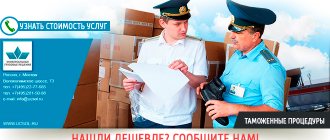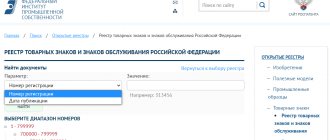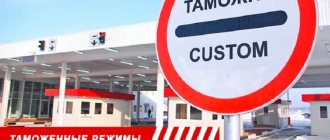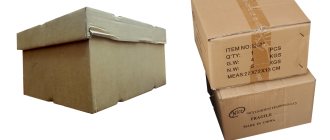For the smooth movement of goods across the border and the implementation of other foreign economic activities, compliance with legal regulations is necessary. One of them concerns the status of a participant in foreign trade activities . It can be received by legal entities or individuals registered as individual entrepreneurs. According to the current legislation of the Russian Federation, no one can be forcibly deprived of or limited in their ability to import or export goods from the country. Participants in foreign trade activities have the right to engage in foreign trade operations on an equal basis. However, the prerequisites must be legal.
What is customs risk
According to Russian legislation, every participant in foreign economic activity importing goods from abroad must pay customs duties. Their value depends on the value of the cargo indicated in the customs declaration.
Customs risk means the likelihood of non-compliance with international treaties and acts in the field of customs regulation and legislation.
How risk category affects the frequency of inspections
| RISK CATEGORY | HOW OFTEN ARE INSPECTIONS OF ANY KIND ALLOWED? |
| Extremely high risk | The maximum frequency of planned control (supervision) activities is at least one, but not more than 2 per year |
| High or significant risk | Average frequency of holding – at least one event every 4 years and no more than one every 2 years |
| Medium and moderate risk | The minimum frequency of planned control (supervision) activities is at least one every 6 years and no more than one every 3 years |
Thus, the types and frequency of planned control (supervisory) activities depend on the assigned risk category (Article 25 of Law No. 248-FZ).
The regulation on the type of control may establish:
- reduced time frames for control (supervision) activities;
- features of their content;
- volume of submitted documents, instrumental examination, tests, examinations and experiments.
Indicators
In fact, risk indicators are signs of non-compliance that allow you to select an object of customs control. They can be in value, quantitative terms, contain a description of the characteristics and properties of goods, documents, vehicles, characteristics of participants in foreign trade activities and other criteria.
Indicators are divided into:
- formalized – identified automatically using a special software tool;
- unformalized - discovered by the official independently, without the use of software.
What kind of punishment will you face if you don’t assess the profrisks?
The assessment is required for all employers - if the company employs at least one employee under an employment contract (including external part-time workers). Therefore, the absence of a labor safety specialist on staff is not a basis for failure to conduct a risk assessment , and, accordingly, for non-compliance with labor safety rules.
The status of risk assessment increased significantly after the procedure was specified in the labor protection rules, which are a regulatory legal act registered with the Russian Ministry of Justice. Part 1 of Article 5.27.1 of the Code of Administrative Offenses interprets the failure to conduct and apply the results of a risk assessment as a violation of state regulatory requirements for labor protection contained in other legal regulations of the Russian Federation.
The fine for a company will be up to 80,000 rubles, and for an individual entrepreneur or an official of an organization - up to 5,000 rubles.
Risk assessment
The risk assessment of violation of the law is carried out in 3 stages:
- Identification – detection, recognition and description of risk.
- Analysis – determination of the area and risk indicators based on the information available to the customs authorities. The analysis uses the tools of the Unified Automated Information System of Customs Authorities (UAIS), system-wide and application software.
- Risk level is the ratio of the frequency of occurrence of a violation of the law and possible damage.
Tools for identifying risk:
- requirements of GOST R 58771-2019 “Risk management. Risk assessment technologies";
- mathematical, statistical and probabilistic methods of analysis;
- expert method.
If the risk level is determined to be high, the formation of an appropriate profile project begins.
Classification system
Classification of risks implies systematization of their multitude according to different criteria, combining subsets into single concepts.
When creating a classification, concepts related to risk characteristics are taken into account, including:
- period of education;
- causes and phenomena contributing to the occurrence;
- counting method;
- type of consequences;
- coverage area.
Methodology for assessing financial risks when forming an enterprise's credit policy.
According to the period of occurrence, risks are divided into:
- promising;
- retrospective;
- current.
By the nature of accounting, risks are:
- Internal, caused by the work of the company based on the business activity of its management, indicators of specialization, productivity, marketing strategy, technical equipment.
- External, not directly related to the production process and formed by economic, political, geographical reasons.
Depending on the consequences, risks are divided into:
- Speculative. They can cause both losses and additional profits due to sharp fluctuations in exchange rates, legislation (taxes), and market conditions.
- Clean. Their characteristic feature is mandatory production losses due to natural disasters, wars, and accidents.
In the field of education, risks are divided into:
- Production, associated with the failure to fulfill plans and production obligations of the organization due to the influence of (unfavorable) external circumstances or the erroneous use of new fixed or working capital. The main reasons for its occurrence may be:
- reduction in planned output volumes;
- increased costs;
- payment of inflated amounts of mandatory payments;
- non-compliance with delivery conditions;
- breakdown (destruction) of equipment.
- Commercial, arising from the sale of goods (services) manufactured or purchased by the organization. The main reasons are:
- reduction in the size of sales due to market or other reasons;
- increase in the cost of purchasing products;
- reduction of commodity mass in circulation;
- increase in costs.
- Financial, depending on the possibility of the company’s failure to fulfill its obligations due to:
- depreciation of the investment portfolio due to currency fluctuations;
- failure to make payments.
- Insurance or the chance of the formation of an insurance situation specified in a transaction for which the insurer is obliged to pay compensation.
Based on the reasons for their occurrence, risks are divided into political (war, prohibition of export/import of goods, ban on movement/movement across the border) and economic, caused by changes in the organization or in the economy of the state (fluctuations in market conditions, liquidity imbalance, drop in the level of management).
Based on the production process, risks are divided into:
- Organizational, arising due to errors by employees or company management, violations of internal control or work rules.
- Market, depending on market conditions (commodity value, demand for goods, loss of liquidity, exchange rate fluctuations).
- Credit related to the counterparty’s violation of the deadline for fulfilling obligations under the transaction. They are related to enterprises with accounts receivable, to companies engaged in the securities market.
- Legal, when losses arise due to lack of consideration of legislative norms, their changes during the transaction, incorrect preparation of documentation, and inconsistency of laws of different states.
- Technical and production related to harm to the environment, accidents due to disruption of the facility due to errors in design and construction.
Taking into account potential consequences, risks are classified into:
- Acceptable when, due to the lack of certain actions, the company is threatened with loss of income (profit). In this case, commercial activity is not deprived of economic feasibility, since the amount of losses is not greater than the amount of projected income.
- Critical, in which the organization faces the loss of revenue, which obviously exceeds the projected profit. In the worst case scenario, the company is threatened with the loss of all funds allocated for the implementation of the transaction.
- Catastrophic, when the company loses its solvency. The size of losses may exceed the size of the enterprise's own capital. This category includes situations that threaten environmental disaster or the safety of citizens.
Risk profiles
The risk profile, taking into account the provisions of Article 376 of the Customs Code of the Eurasian Economic Union, is a document containing information about the area of risk, its indicators, as well as instructions on the application of necessary measures to prevent or minimize risks.
Main risk profiles in customs:
- cost – price in US dollars per 1 kg net;
- weight – the difference between net and gross weights;
- nomenclature - substitution of product code, use of cover product codes;
- origin of the goods – substitution of the country of origin, discrepancy between the markings on the goods and in the declaration;
- foreign trade participants - suppliers from offshore countries, fly-by-night companies importing goods;
- the likelihood of placing contraband, drugs and other prohibited substances among the imported goods.
The Federal Customs Service has developed and regularly updates risk profiles based on statistics and exchange prices. At its core, the risk profile is the currently recommended price of a product. This serves as a methodological guide for customs officers.
Reference. According to the scope of action, there are all-Russian, regional, and zonal profiles.
One of the main directions of RMS implementation
One of the main directions of implementation of the RMS is the implementation of the principle of selectivity during customs control, which involves reducing the number of customs inspections and conducting them only in cases of triggering risk profiles, direct measures to minimize which are determined by customs inspection, or at the request of the declarant, when a participant in foreign trade activities needs to identify the goods he receives. For the purpose of organizing customs control, the Federal Customs Service of the Russian Federation develops and sends risk profiles for application to the customs authorities, containing appropriate instructions on the application of customs control measures. Its full implementation will make it possible to reduce customs inspections of imported goods by up to 10%, and for exported goods by up to 8%, without compromising the security of the state. According to paragraph 2 of Art. 358 of the Labor Code of the Russian Federation, the risk management system is based on the effective use of customs authorities’ resources to prevent violations of the law when moving goods across the customs border of the state, i.e. presents the qualitative content of modern customs administration. Such resources include professional personnel of customs authorities, technical means of customs control, customs infrastructure, and information resources. The main components of risk management are customs inspection of the financial and economic activities of importers, customs inspection of goods and vehicles, and control of the correct completion of customs documents.
How to reduce costs
Foreign economic activity is accompanied by a large number of risks, against which it is impossible to insure 100%, but can and should be reduced. The most severe consequences arise during customs clearance of cargo.
False declaration
This is the most common problem. Behind it, as a rule, is the human factor. An expensive error can occur at all stages of registration: false information when filling out a declaration, in shipping documents, extra, undeclared goods.
In this case, a case of administrative violation is opened against the foreign trade participant, the purpose of which is to identify a possible attempt to understate customs duties. While the proceedings are ongoing (about a month), the amount of losses will grow, regardless of the final decision.
In this case, it is especially important that the applicant independently discovers the error and sends the amended declaration to the inspector. If a violation is detected by customs, you need to immediately assess its nature and send them a letter defining the error as a technical one (if possible). This will have a positive effect on the consideration of the case.
Doubts about the correctness of the stated code
Customs may consider that the cargo should be classified according to a code with a higher rate of customs duties. In this case, sampling is scheduled to confirm the declared code. The cargo can be exported, but a security deposit will have to be made to the customs deposit.
Laboratory studies last about a month. If the code is confirmed, the security payment is returned within six months. If not, they create a case of administrative violation and recalculate all previous deliveries, if it is not the first.
If the bona fide applicant did not make an intentional error, a claim can be made to the customs representative, who is responsible for the correctness of the code applied.
Doubts about the correctness of the indicated price
When customs detects an undervalued price that differs from the profile, an additional check is assigned and a calculation is made to ensure the payment of customs duties. The amount must be paid to release the goods.
If it is insignificant and the supply is single, it is better to agree to the adjustment and deposit money. This way you can avoid additional costs for collecting an impressive package of evidentiary documents. If the review is decided in favor of the foreign trade participant, additional costs are subject to refund.
Forms of control
The choice of forms of control depends on a number of factors. First of all, customs control must be effective. Achieving the goals set for it must be correlated with the costs of its implementation. In addition, customs control should be as unburdensome as possible, invisible to persons crossing the customs border and to participants in foreign trade activities. At the same time, both requirements for modern customs control should not interfere with the fulfillment of its most important task - ensuring compliance with customs legislation. A novelty in Russian customs legislation is the transition from total control to its selectivity, based on a risk management system. It should be noted that this system has been introduced and applied into the practice of the customs authorities of the Russian Federation since August 2004, but we can already confidently recognize its great importance in organizing customs control. It is the use of RMS that makes it possible to find a compromise between ensuring effective control of compliance with customs legislation, economic protection of the country and promoting trade development. Customs control is now carried out on the basis of a risk analysis and management system, i.e. selectively for those goods and cargo that are associated with risks for the economy, state security, public health, etc. If there is a high probability of non-compliance with the customs legislation of the Russian Federation, then it is necessary to choose priorities - first of all, check those transactions and supplies associated with offenses that entail the most significant losses from the point of view of the interests protected by customs legislation. In fact, customs control as an independent action manifests itself only during customs inspection; in all other cases, the application of control measures is an integral part of customs clearance. Risk is realized in the form of risk profiles, which can be: - mandatory (for example, for special categories of goods); - targeted; - random.
Applying a Risk Profile
The risk profile is a standard form on 2 A4 sheets, which contains 4 sections:
- General information: registration number, territorial scope code, registration date, serial number, validity period, etc.
- Information about the risk area: characteristics, indicators, exceptions from the profile.
- Direct measures to minimize: forms of customs control, means of identification, measures to ensure compliance with legislation, etc.
- Contact information.
The risk profiles listed are closed and are intended for official use only, and the document itself serves as a guide to action for customs officers.
For example , cargo arrived at customs overweight. In accordance with section 3 of the risk profile, inspection is carried out at full unloading and weighing.
Risk management system for customs control
RMS is a modern administration system, which is designed to achieve maximum efficiency of customs control with optimal use of customs service resources.
Legal basis for the application of RMS in the Russian Federation:
- Federal Law No. 289 of August 3, 2021 “On customs regulation in the Russian Federation and on amendments to certain legislative acts of the Russian Federation.”
- Federal Law No. 317 of November 14, 2021 “On ratification of the Treaty on the Customs Code of the Eurasian Economic Union.”
The system is based on the principles of selectivity. This allows the service resources to be used in the most important, priority areas, in which:
- violations of the law are persistent;
- large-scale tax evasion is observed;
- the competitiveness of domestic producers may be undermined;
- important state interests are affected, which the customs service is called upon to protect.
The RMS is based on the standards of the World Trade Organization and the principles of risk management:
- reducing customs control to the minimum necessary to comply with the law;
- application of a risk management system;
- use of risk analysis assessment to determine the object of inspection;
- desire for mutual understanding between customs authorities and participants in foreign trade activities.
The RMS is applied at all main stages of customs control:
- preliminary information;
- arrival/departure of goods;
- transportation of cargo in accordance with the customs transit procedure;
- movement of transport for international transportation;
- transportation of goods of individuals for personal use;
- movement of goods by international mail.
The machine decides: how does the Federal Customs Service determine the risk level of a foreign trade participant?
When engaged in foreign economic activity, an organization falls into one of the risk categories according to the risk management system of the Federal Customs Service of Russia. Assigning a risk category is a matter of interest, not without a degree of trepidation. After all, the speed of cargo inspection at customs and the likelihood of additional costs depend on which category the company falls into.
The basis for risk management in the Federal Customs Service of Russia is a subject-oriented model. Participants in foreign economic activity (hereinafter referred to as FEA) are divided into three categories of risk level: low, medium and high. The FCS assesses the likelihood of violation of customs legislation and subsequently tries out customs control measures that correspond to the company’s risk level.
As of October 2021 (according to the Federal Customs Service of Russia), the number of participants in foreign economic activity with a low level of risk was about 8,000 organizations, about 90 thousand participants in foreign economic activity were classified as medium-risk, and 12 thousand were classified as high-risk.
Benefits of green light
Three risk categories, like a customs traffic light, regulate the speed of cargo clearance. If the company is assigned a low risk level, then this is a green light. Goods, as a rule, are processed automatically without inspections, examinations or verification of customs value.
Yellow and red lights are turned on for companies with a medium and high risk level. Since risk categories are assigned automatically, customs authorities immediately make decisions on inspection, sampling and sampling, and appoint an examination. Time and money costs should be expected from additional verification of the customs value of the goods with the requirement to make a significant cash deposit for the period of verification.
How does an automaton think?
Absolutely all participants in foreign trade activities undergo a categorization procedure, during which the system automatically distributes organizations according to risk levels of violating customs legislation. The risk level is assigned based on the results of checking several dozen criteria. The system sorts companies based on how likely the company is to violate customs laws based on its transaction history.
Automated categorization is not tied to the industry; it is used for all participants in foreign trade activities, regardless of the type of their activity, categories of goods transported and direction of movement (export/import).
Automated categorization is carried out quarterly until the 25th day of the last month of the quarter. Based on the results of this procedure, lists of foreign trade participants of low, medium and high risk levels are formed, which are used in the next quarter. Moreover, for companies classified as low risk, categorization is carried out monthly until the 25th of each month.
Why do they turn on the red light?
We are often asked the question: what are the reasons for a company to fall into the ranks of those with a medium and high level of risk?
As practice shows, the most common reason for a bona fide foreign trade participant to fall into the medium and high risk categories is the presence of small amounts of debt to the customs authorities. It happens that we are talking about several rubles. After all, the system for assigning foreign trade participants to one or another risk group works automatically, collecting and analyzing facts, regardless of details and nuances.
Blocking criteria
Among the criteria characterizing organizations according to the FCS risk management system, there are blocking criteria. If at least one of the blocking criteria is identified, the foreign trade participant cannot be classified as low risk, regardless of the results of calculating indicators according to other criteria.
Among the blocking criteria:
Being on the list of persons for whom customs inspection is impossible. This means that persons, without explanation, evade providing the customs authority with documents and information necessary to conduct a customs inspection. The presence of a foreign economic activity participant in the stage of liquidation or termination of activity. Failure to fulfill the obligation to pay customs duties, penalties, interest. The presence of debt to pay customs duties is taken into account as a blocking criterion on the tenth day after the expiration of the deadline for voluntary payment. This period is established in the notification of payment of customs duties and is 20 days from the date of its receipt. Thus, the person is given an additional 10 days to resolve possible objective factors of failure to pay the debt on time. The presence of an unfulfilled obligation to pay an administrative fine. The blocking criterion in connection with non-payment of an administrative fine is triggered after 70 days from the date of entry into force of the resolution of the customs authority. Availability of a court conviction that has entered into legal force under Article 194 of the Criminal Code of the Russian Federation (Evasion of customs duties levied on an organization or individual) Classification of a foreign economic activity participant as a high level of tax risk based on the results of categorization by the Federal Tax Service of Russia, etc.
The full list of blocking criteria can be found here https://www.consultant.ru/document/cons_doc_LAW_208804/f90b85f50683c1aef089325b71ca1af47ec1f45d/
Is there anything beyond blocking criteria?
If there are no signs in the organization’s activities that indicate blocking criteria, then the risk category of such an organization will be determined based on the results of the analysis according to the remaining 29, so-called analytical, criteria.
Such criteria are divided into two groups – positive and negative.
Positive criteria evaluate the positive aspects of the activities of a foreign trade participant. These include:
1. The size of the authorized capital (taken into account, but the amount is not precisely defined in the documentation)
2. Period of conducting foreign economic activity (from the moment of filing the first declaration)
3. Amount of customs duties paid
4. Using the services of your Personal Account on the website of the Federal Customs Service of Russia
5. Classification of an organization by the tax service into the category of low tax risk (based on the results of categorization by the Federal Tax Service of Russia)
6. Export orientation
Negative criteria assess the presence of negative aspects in the activities of a foreign trade participant, as:
1. Share of trade turnover with offshore zones (the share of goods moved within the framework of trade relations with companies registered in offshore zones is estimated).
2. Significant deviations of the main indicators of customs declaration (weight, value) to a lesser extent from the average values for similar goods.
3. Volumes of supplies of goods from a country other than their country of origin.
4. Violations identified as a result of customs control before and after release (the share of goods in respect of which violations of mandatory requirements were identified during customs control is assessed).
5. Bringing to administrative liability, as well as initiation of criminal cases (the number and severity of administrative offenses are assessed, the existence of facts of initiation of criminal cases for crimes related to the movement of goods is taken into account).
Positive and negative criteria are assessed exclusively in combination, that is, none of these criteria is the basis for classifying a foreign trade participant to a certain risk category.
In conclusion
In addition to the results of analyzing the organization’s activities according to the above criteria, there are two more key conditions for a company to fall into the low-risk category.
1. The number of issued declarations for goods was at least 100 over two years
2. More than two years have passed since the date of registration of the first declaration for goods, or six months for organizations with a low level of tax risk.
If your company has been participating in foreign trade activities for more than two years and has issued at least 150 declarations during this time, has not been brought to administrative or criminal liability, has no debt to customs and tax authorities, but is still not recognized as a low-risk company, you should not despair. It is worth analyzing the situation, correcting the identified shortcomings and trying to enter the “green corridor” in the next quarter.
As we can see, the algorithm for assigning a risk level, although transparent, contains some assessment mechanisms that are available only to developers. For example, the size of the authorized capital is not determined, although it affects the assignment of the risk level. However, as practice shows, knowledge of published categorization criteria increases the chances of goods moving across the border.
To fully understand the categorization procedure, we recommend that you read the document: The procedure for automated determination of the risk level category of participants in foreign economic activity, approved by Order of the Federal Customs Service of Russia dated December 1, 2021 No. 2256 (as amended by Order of the Federal Customs Service of Russia dated July 31, 2021 No. 1247) https ://www.consultant.ru/document/cons_doc_LAW_208804/2ff7a8c72de3994f30496a0ccbb1ddafdaddf518/
auto RU
Challenging the risk profile
There are two ways to appeal a customs decision: through a higher authority or an arbitration court. The choice depends on the specific situation, but higher authorities, as a rule, side with customs, and it is in court that declarants most often seek recognition of their rights.
We must be prepared for the fact that the case is unlikely to be limited to the court of first instance. Classification of goods is a complex and ambiguous process.
What you need to prepare to go to court:
- a package of documents with the most comprehensive information;
- analysis of judicial practice in similar cases;
- a reasoned application to the court accompanied by a customs expert report.
Not all claims are worth defending in court, but, for example, in the case of an inaccurate declaration, this is advisable, since here we are talking about financial and personal safety.
Conducting professional risk assessments with specialists
A company can conduct a risk assessment independently, or it can delegate this task to a specialized organization .
Not everyone, even the most experienced occupational safety specialist, is able to personally conduct a risk assessment. Yes, he can organize the work, but it takes teamwork to complete the assessment. This is especially true for manufacturing enterprises and large businesses. We advise you to involve external experts or send members of your internal commission for training for such a complex task as assessing profrisks. You can competently assess the profit risks in your company here >>>
Remember that having a third-party risk assessment provider has the obvious advantage of providing a fresh, independent perspective on your business's problems. Professionals from a specialized organization for labor protection are “sharpened” on assessment, master various techniques, constantly improve their skills, participate in round tables and conferences.
To avoid claims from the GIT inspector, entrust the risk management to experienced professionals. Read our article Occupational Risk Assessment: Which Company to Engage .






